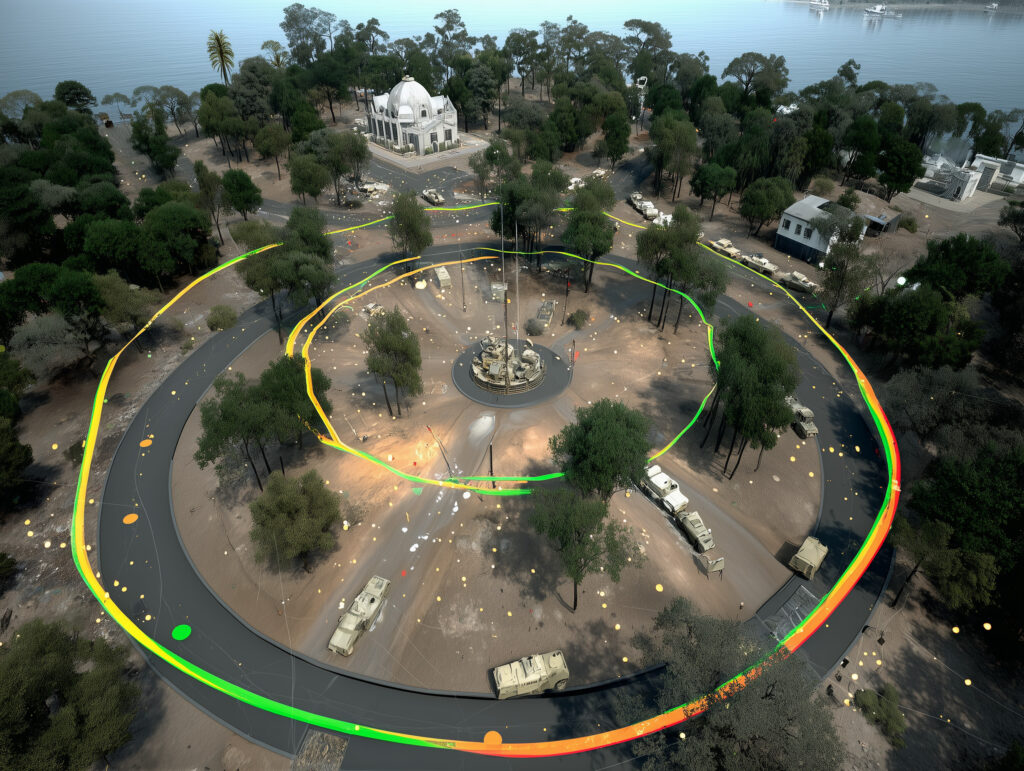The system’s ability to operate across classification levels addresses a critical military requirement. Tactical units can maintain separate secure channels for different classification levels while using the same physical radios. This eliminates the need for multiple communications systems, reducing weight, power consumption, and signature – critical factors for tactical operations.
The Strategic Imperative
The Department of Defense cannot afford to wait for quantum threats to materialize. Every military transmission intercepted today becomes a future vulnerability when quantum computers arrive. For a force that depends on information superiority, protecting the electromagnetic spectrum is not optional – it’s existential.
GABRL offers the military a path to quantum-resistant communications without sacrificing operational flexibility. By making military-grade encryption software-defined and invisible to applications, it enables forces to maintain tactical advantage while preparing for strategic threats.
From squad radios to satellite constellations, from submarines to space assets, secure RF communications underpin American military superiority. GABRL ensures these vital links remain unbreakable – today, tomorrow, and in the quantum future. In the electromagnetic battlefield beyond line-of-sight, quantum-resistant security isn’t just an advantage – it’s survival.# Beyond Line-of-Sight: Quantum-Resistant Encryption for Military RF and Signal Transmissions
Modern warfare operates across an invisible battlefield of electromagnetic spectrum. From squad radios in Afghanistan to satellite communications linking global command centers, military operations depend on secure RF transmissions. Yet these vital communication links face unprecedented threats from both conventional electronic warfare and the looming specter of quantum computing. In contested environments where adversaries actively hunt signal emissions, traditional encryption alone is no longer sufficient.
The Evolving Threat to Military Communications
Today’s military RF communications confront a perfect storm of vulnerabilities. Near-peer adversaries deploy sophisticated electronic warfare systems capable of intercepting, analyzing, and exploiting electromagnetic emissions across the spectrum. Software-defined radios allow enemies to rapidly adapt to frequency-hopping patterns and overcome traditional anti-jamming techniques.
The quantum threat adds a terrifying new dimension. Military communications often contain information with long-term strategic value: operational patterns, technical capabilities, intelligence methods. Adversaries collecting encrypted military transmissions today are betting on quantum computers to unlock these secrets tomorrow. For tactical communications that might reveal unit movements, logistics networks, or command relationships, even historical decryption could prove catastrophic.
Consider the vulnerabilities across military RF systems:
- Tactical radios broadcasting in contested electromagnetic environments
- Satellite communications traversing thousands of miles through open space
- Line-of-sight datalinks between aircraft and ground stations
- Beyond-line-of-sight HF communications for maritime operations
- Mesh networks connecting distributed sensors and platforms
Each represents a critical capability that adversaries actively target for exploitation or disruption.
Why Traditional COMSEC Falls Short at the Tactical Edge
Military communications security (COMSEC) traditionally relies on hardware-based encryption devices, complex key management systems, and rigid protocols. While effective in garrison environments, these approaches face severe limitations in tactical operations:
Loading cryptographic keys into tactical radios requires physical access and secure fill devices. In combat operations, this creates dangerous vulnerabilities when units need to rapidly reconfigure or replace damaged equipment. The logistics burden of managing crypto materials across distributed forces compounds these challenges.
Furthermore, traditional COMSEC architectures struggle with joint and coalition operations. Different services and allies often use incompatible encryption systems, forcing warfighters to choose between security and interoperability. In dynamic tactical environments, these compromises can prove fatal.
GABRL’s Software-Defined Solution for Tactical Communications
GABRL revolutionizes military RF security through its software-defined, quantum-resistant approach. Unlike hardware-dependent solutions, GABRL deploys as a software layer that integrates seamlessly with existing military communications systems. This architecture provides immediate advantages for tactical operations:
When a Special Operations team activates their tactical radios, GABRL automatically establishes quantum-encrypted channels without requiring pre-loaded keys or specialized crypto hardware. The software adapts to any RF waveform or protocol, from legacy SINCGARS radios to cutting-edge software-defined systems.
The zero-trust model proves especially valuable in contested environments. GABRL continuously authenticates every transmission, ensuring that captured radios or compromised networks cannot be exploited. Even if adversaries intercept RF emissions, the AES256 quantum-resistant encryption remains unbreakable by both current and future computational capabilities.
Real-World Tactical Applications
Consider a distributed maritime operation in the Pacific. Navy vessels coordinate through satellite communications while aircraft provide surveillance via datalinks. Submarines operate using HF burst transmissions. Each platform runs different communications systems with varying security requirements.
GABRL unifies this complex environment under a single quantum-resistant security umbrella. The destroyer’s satellite communications, the P-8’s sensor datalinks, and the submarine’s HF transmissions all receive automatic AES256 encryption. Microsegmentation ensures that compromise of one system doesn’t cascade across the force.
For forward-deployed Army units, GABRL transforms tactical network security. A brigade combat team can establish secure enclaves for different echelons – company networks remain isolated from battalion systems, while maintaining encrypted communications between levels. When units task-organize for specific missions, GABRL dynamically adjusts security boundaries without manual reconfiguration.
The software’s invisible operation proves crucial during combat operations. Soldiers focus on their mission while GABRL handles encryption, authentication, and key management automatically. No training on complex crypto procedures, no fumbling with fill devices under fire – just secure communications that work when needed most.
Preparing for Tomorrow’s Electromagnetic Battlefield
Future conflicts will feature AI-driven electronic warfare, autonomous systems requiring secure machine-to-machine communications, and quantum computers capable of breaking traditional encryption. Military forces need security solutions that anticipate these challenges while remaining practical for today’s operations.
GABRL’s software-defined architecture ensures adaptability as threats evolve. New waveforms, emerging protocols, and novel communication technologies can be secured without

